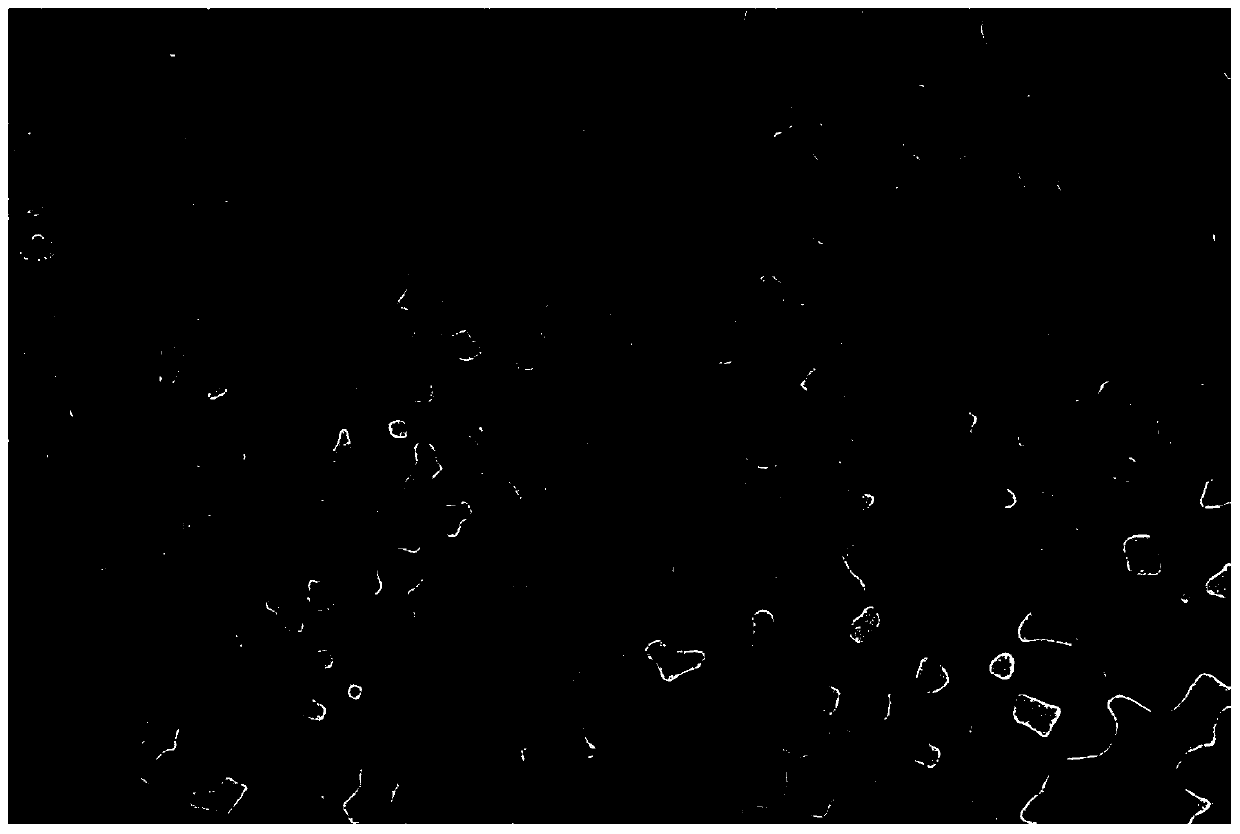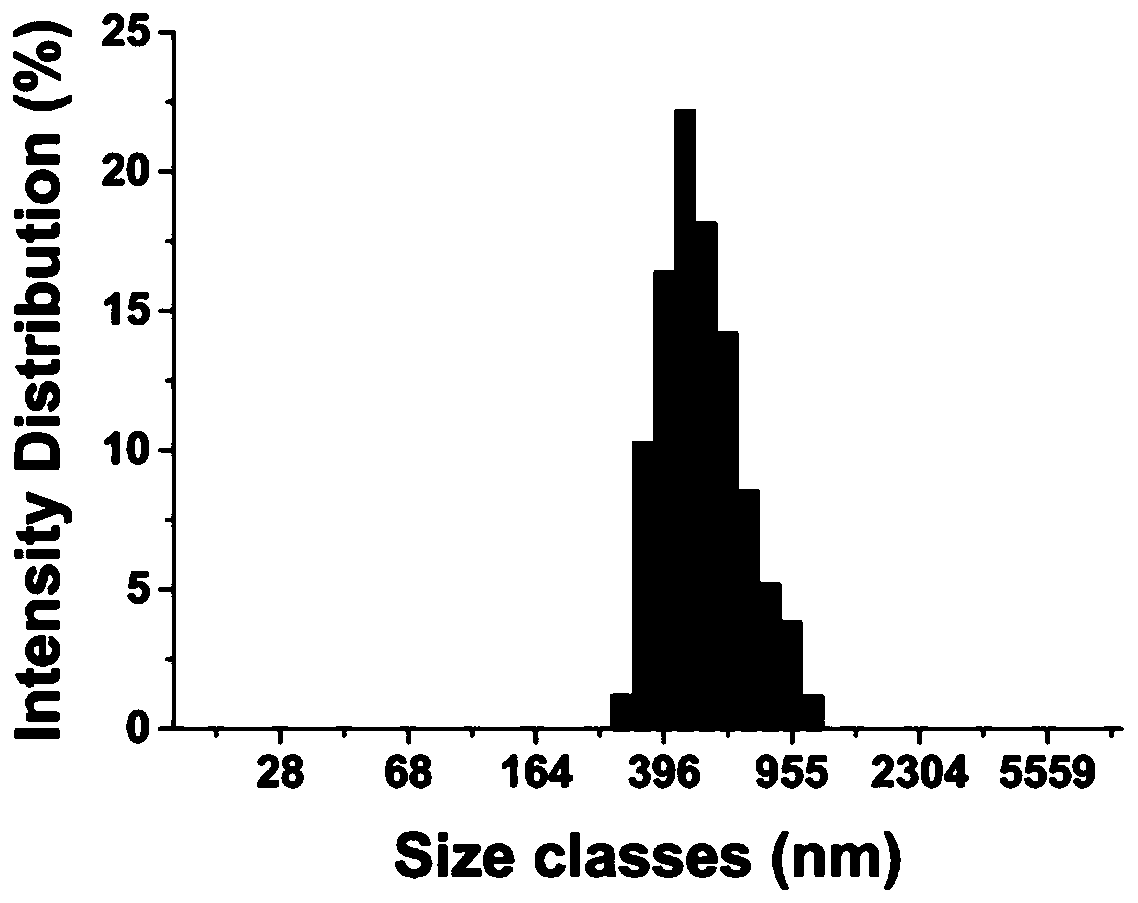Human polypeptide for constructing tumor pH response micro-robot and application thereof
A micro-robot, human-derived technology, applied in the field of human-derived polypeptides, can solve serious problems, cancer cell toxicity, off-target effects, etc., achieve high biocompatibility, good drug side effects, and reduce drug side effects.
- Summary
- Abstract
- Description
- Claims
- Application Information
AI Technical Summary
Problems solved by technology
Method used
Image
Examples
Embodiment 1
[0032] Example 1: Human-derived polypeptides are loaded with pirarubicin and indocyanine green through self-assembly function to form micro-robots, and the micro-robots are characterized:
[0033] Synthetic method: Firstly mix 1mg polypeptide freeze-dried powder and 1mg powdered indocyanine green thoroughly under the vortex shaker, and quickly centrifuge to collect the green mixture. Second, 5 μL of water was slowly added to the green mixture with constant stirring. After thorough mixing, 1 mL of water was added to dissolve the unbound polypeptide and indocyanine green, and the insoluble matter was collected by centrifugation at 5 000 rpm for 10 minutes. Finally, 1 mg of pirarubicin and 1 mL of water were added to the insoluble matter, shaken and mixed, and placed in an ice bath for 20 minutes of sonication.
[0034] Characterization: Using transmission electron microscopy and dynamic light scattering particle size analyzer (DLS) to study the morphology and particle size of t...
Embodiment 2
[0035] Example 2: Tumor acidic pH response of microrobots
[0036] Validation of release environment: acidic pH is the main feature of tumor tissue, so the acidic pH of tumors is often designed as a targeted trigger for drug release. Fluorescence spectroscopy detects changes in the emission intensity spectra of microrobots in the pH=7.4 and pH=6.5 environments. see Figure 4 , as the pH reached 6.5, we found that the solution containing the microrobots became turbid and green precipitates appeared; the fluorescence emission intensity of the solution was detected by fluorescence spectroscopy and found that the fluorescence intensity reversed, and the fluorescence intensity of indocyanine green decreased hundreds of times , the fluorescence intensity of pirarubicin increased dozens of times, which indicated that pirarubicin was released under acidic conditions, and the aggregation of indocyanine green caused fluorescence quenching.
Embodiment 3
[0037] Example 3: Anti-tumor growth of microrobots in an acidic pH environment
[0038] CCK-8 was used to detect the killing effect of microrobots on breast cancer cell MDA-231 in the environment of pH=7.4 and pH=6.5. 1×10 5Cells were seeded in 96-well plates, and after overnight growth, they were incubated with different concentrations of pirarubicin and micromachines for 2 hours in media with pH=7.4 and pH=6.5, respectively. After 2 hours, replace with fresh medium and continue to culture for another 24 hours, CCK-8 detects the viability of tumor cells. see Figure 6 : H, I, we found that microrobots and free indocyanine green have no inhibitory effect on the growth of cancer cells, indicating that they have strong biocompatibility; but with the increase of free pirarubicin, more and more of cancer cells were killed. When H+ triggered the microrobots to release pirarubicin, the cytotoxic effect of the microrobots was significantly enhanced, exceeding that of free pirarub...
PUM
| Property | Measurement | Unit |
|---|---|---|
| Particle size | aaaaa | aaaaa |
Abstract
Description
Claims
Application Information
 Login to View More
Login to View More - R&D
- Intellectual Property
- Life Sciences
- Materials
- Tech Scout
- Unparalleled Data Quality
- Higher Quality Content
- 60% Fewer Hallucinations
Browse by: Latest US Patents, China's latest patents, Technical Efficacy Thesaurus, Application Domain, Technology Topic, Popular Technical Reports.
© 2025 PatSnap. All rights reserved.Legal|Privacy policy|Modern Slavery Act Transparency Statement|Sitemap|About US| Contact US: help@patsnap.com



